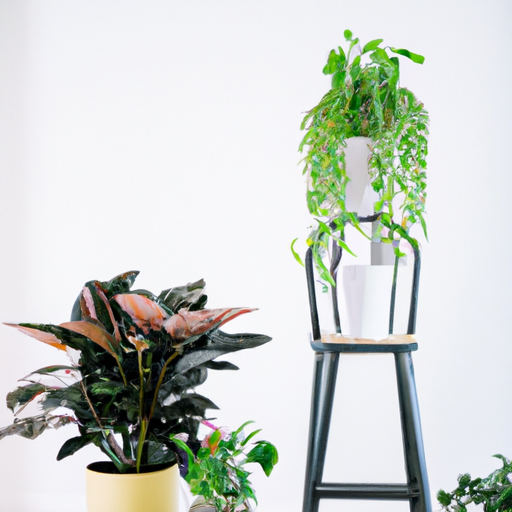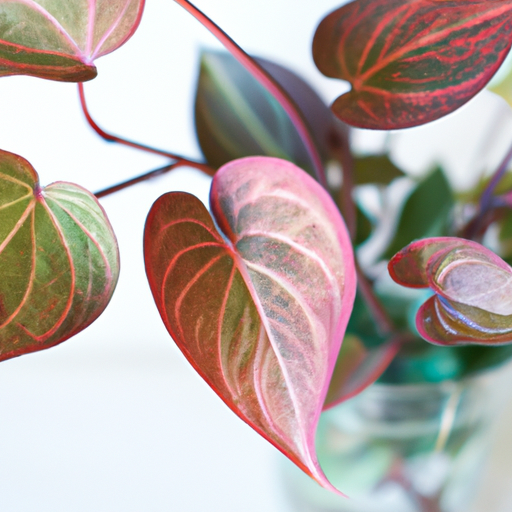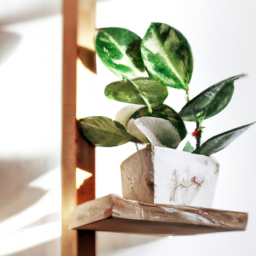
Are you looking to bring some life and vibrant energy into your living spaces? Well, look no further! In this blog post, we will explore the wonderful world of styling indoor plants in different living spaces. Whether you live in a cozy apartment or a spacious house, incorporating indoor plants into your decor can instantly transform the atmosphere and add a touch of nature to your surroundings. So, if you’re ready to discover creative ways to showcase your green thumb and create stunning botanical displays in every room, let’s dive in and explore the art of styling indoor plants in different living spaces.
Choosing the Right Indoor Plants for Different Living Spaces
Indoor plants have become increasingly popular in recent years, adding a touch of nature and beauty to our living spaces. However, not all plants thrive in the same conditions, so it’s essential to choose the right indoor plants for different living spaces. In this guide, we will explore the factors to consider and provide you with a step-by-step approach to styling indoor plants in various areas of your home.
Consider the Lighting Conditions
When selecting indoor plants, it’s crucial to consider the lighting conditions of the specific living space. Different plants have varying light requirements, ranging from low to bright indirect light. Assess the available natural light in the area and choose plants accordingly.
For spaces with ample natural light, such as near windows or in sunrooms, plants that thrive in bright indirect light are ideal. Some popular options include the Swiss cheese plant (Monstera deliciosa), snake plant (Sansevieria), and rubber plant (Ficus elastica).
If the living space has limited natural light, opt for plants that can tolerate low light conditions. The peace lily (Spathiphyllum), ZZ plant (Zamioculcas zamiifolia), and pothos (Epipremnum aureum) are excellent choices for such areas.
Determine the Humidity Levels
Humidity levels can significantly impact the growth and overall health of indoor plants. While some plants thrive in high humidity environments, others prefer drier conditions. Assess the humidity levels in the living space and choose plants accordingly.
For areas with higher humidity, such as bathrooms or kitchens, consider plants that enjoy moisture, such as ferns (Nephrolepis exaltata), orchids (Orchidaceae), and spider plants (Chlorophytum comosum).
In contrast, if the living space has lower humidity levels, opt for plants that can tolerate drier conditions, like succulents (such as Aloe vera and Echeveria) and cacti.
Consider the Space and Size
The available space and size of the living area will also determine the type and size of indoor plants you can incorporate. Consider the dimensions of the room and the available surfaces, such as shelves, tables, or floor space.
For smaller living spaces, vertical gardening can be an excellent option. Hang plants from the ceiling or use wall-mounted planters to maximize space utilization. Some suitable plants for vertical gardening include trailing pothos, ivy (Hedera helix), and string of pearls (Senecio rowleyanus).
In larger living areas, you can incorporate larger plants to create a focal point. Consider plants like the fiddle-leaf fig (Ficus lyrata), bird of paradise (Strelitzia reginae), or palm trees (such as the Areca palm or Kentia palm).
Remember to leave enough space for the plants to grow and thrive. Overcrowding can hinder their growth and lead to an unappealing aesthetic.
By considering the lighting conditions, humidity levels, and available space, you can choose the right indoor plants for different living spaces. Remember to regularly care for your plants, providing them with the necessary water, nutrients, and attention they need to flourish. With proper styling, your indoor plants will enhance the beauty and ambiance of your living spaces, bringing a touch of nature indoors.
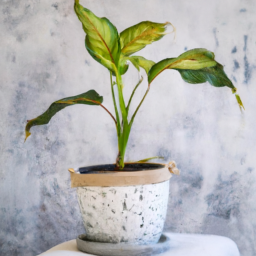
Creative Ways to Style Indoor Plants in Small Apartments
Indoor plants can bring life and freshness to any living space, even in small apartments where space might be limited. With a little creativity, you can transform your small apartment into a green oasis. In this article, we will explore some creative ways to style indoor plants in small apartments, helping you make the most of your limited space.
1. Vertical Gardens
One of the most effective ways to maximize space in a small apartment is by utilizing vertical gardens. These gardens allow you to grow plants vertically, either on walls or hanging from the ceiling. There are various options available, such as wall-mounted planters, hanging pots, or even DIY projects using repurposed materials.
To create a vertical garden, choose plants that thrive in low light conditions, as apartments often lack direct sunlight. Some great options include pothos, snake plants, and ferns. Arrange the plants in a visually appealing pattern, considering factors like color, texture, and size. Hanging plants can be placed near windows or in corners to add depth to the room.
Remember to consider the weight of the plants and the strength of the wall or ceiling when installing your vertical garden. It’s essential to follow the manufacturer’s instructions or seek professional help to ensure the safety and stability of your installation.
2. Hanging Planters
If you have limited floor or shelf space, hanging planters can be a fantastic solution. These planters can be suspended from the ceiling or mounted on walls, allowing you to showcase your plants without taking up valuable floor space. Hanging planters come in various styles, from macrame hangers to modern geometric designs.
When choosing hanging planters, consider the weight of the plants and the strength of the ceiling or wall. Opt for lightweight planters made from materials like fabric or lightweight ceramics. Ensure that the planters have proper drainage to prevent water damage to your apartment.
Hang the planters at different heights to create visual interest and make the most of your vertical space. Mix and match different plant varieties to add texture and color to your living area. Consider using trailing plants like ivy or string of pearls for a cascading effect.
3. Plant Shelves and Ledges
Another creative way to style indoor plants in small apartments is by utilizing shelves and ledges. These can be wall-mounted or freestanding, providing a dedicated space for your plants. Plant shelves and ledges can be customized to fit your available space and can be easily rearranged as your plant collection grows.
When selecting shelves or ledges, opt for sturdy materials like wood or metal that can support the weight of your plants. Consider the depth of the shelves to accommodate different pot sizes. You can also incorporate decorative elements like fairy lights or small artwork to enhance the overall aesthetic.
Arrange your plants on the shelves, keeping in mind their light requirements and growth habits. Place taller plants at the back and smaller ones in the front to create depth. Mix and match different plant heights, textures, and colors to create an eye-catching display.
Remember to regularly rotate your plants to ensure they receive equal sunlight and prevent them from leaning towards the light source.
Overall, styling indoor plants in small apartments requires creativity and thoughtful planning. By utilizing vertical gardens, hanging planters, and plant shelves, you can transform your limited space into a lush and inviting environment. Experiment with different plant combinations and arrangements to find what works best for your living space. Happy styling!
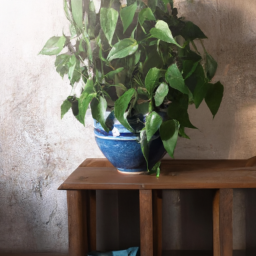
Styling Indoor Plants to Enhance Different Decor Styles
Welcome to our guide on styling indoor plants to enhance different decor styles. Indoor plants not only bring life and freshness to your living spaces but also play a crucial role in enhancing the overall aesthetics of your home. By carefully selecting and arranging indoor plants, you can create a harmonious and visually appealing environment that complements your decor style. In this article, we will explore three popular decor styles and provide step-by-step guidance on how to style indoor plants to enhance each style.
1. Modern and Minimalistic Decor
Modern and minimalistic decor styles focus on clean lines, simplicity, and a clutter-free environment. When styling indoor plants in this decor style, it’s essential to choose plants that have a sleek and minimalist look. Opt for plants with slim, upright leaves and minimal foliage. Some popular choices include snake plants, ZZ plants, and fiddle leaf figs.
Placement is crucial in modern decor. Use plant stands or elevated planters to create height variations and add visual interest. Arrange your plants in groupings of odd numbers, such as three or five, to create a balanced and harmonious display. Consider placing plants near natural light sources, like windows or skylights, to highlight their beauty.
To enhance the modern decor style further, choose planters in neutral colors, such as white, black, or gray. Avoid overly decorative or intricate pots that may distract from the minimalist aesthetic. Keep the overall plant arrangement simple and uncluttered, allowing the plants to be the focal point of the space.
2. Bohemian and Eclectic Decor
Bohemian and eclectic decor styles embrace a mix of patterns, textures, and vibrant colors. When styling indoor plants in this decor style, you have the freedom to be creative and adventurous. Opt for plants with lush foliage and interesting shapes, such as monstera deliciosa, bird of paradise, or philodendron.
Embrace the concept of “more is more” when arranging plants in bohemian decor. Create a jungle-like atmosphere by clustering plants together in various sizes and heights. Hang trailing plants from macrame plant hangers or place them on floating shelves. Incorporate decorative planters with intricate patterns or vibrant colors to add visual interest.
Consider mixing different plant species and adding accessories like dreamcatchers, woven baskets, or vintage rugs to enhance the bohemian vibe. Don’t be afraid to experiment and let your personal style shine through in the arrangement of your indoor plants.
Scandinavian and Nordic decor styles are known for their simplicity, functionality, and emphasis on natural elements. When styling indoor plants in this decor style, choose plants that have a clean and minimalist aesthetic, similar to the modern decor. Opt for plants with small to medium-sized leaves and a compact growth habit, such as peace lilies, rubber plants, or spider plants.
In Scandinavian decor, less is more. Keep the plant arrangement minimal and focus on creating a sense of balance and tranquility. Use simple, unadorned planters in natural materials like clay or ceramic. Arrange plants in small groupings, allowing negative space to be an essential element of the overall design.
Consider adding natural elements like pebbles, stones, or wooden accents to complement the plants and create a cohesive look. Scandinavian decor often incorporates a color palette of whites, grays, and muted tones, so choose plants with foliage that complements these colors.
By following these step-by-step guidelines, you can style indoor plants to enhance different decor styles. Remember to choose plants that fit the overall aesthetic, consider placement and arrangement, and incorporate complementary accessories or materials. Whether you prefer a modern, bohemian, or Scandinavian decor style, indoor plants can elevate your living spaces and create a visually stunning environment.
Summary Snapshot
Indoor plants have become a popular trend in home decor, and for good reason. They not only bring a touch of nature indoors but also provide numerous health benefits. However, simply placing a plant in a corner of a room won’t do justice to its beauty and potential. To truly enhance the aesthetic appeal of your living spaces, it’s important to consider the right styling techniques for your indoor plants.
When it comes to styling indoor plants, one size does not fit all. Each living space has its own unique characteristics and ambiance, and your plants should complement and enhance these features. For instance, in a small apartment with limited floor space, hanging plants can be a great solution. They not only add greenery but also create an illusion of height, making the room feel more spacious. On the other hand, if you have a large living room with high ceilings, tall potted plants can be used as statement pieces to draw attention and add drama to the space.
Another important aspect to consider is the style and theme of your living spaces. If you have a minimalist or modern decor, sleek and architectural plants such as snake plants or ZZ plants can be an excellent choice. Their clean lines and simple foliage will blend seamlessly with the overall aesthetic. In contrast, if your home has a bohemian or eclectic vibe, you can experiment with a mix of different plant varieties, sizes, and textures to create a vibrant and lively atmosphere.
Ultimately, the key to styling indoor plants lies in understanding the unique characteristics of your living spaces and choosing plants that complement and enhance those features. By incorporating the right plants and styling techniques, you can transform any room into a green oasis that not only looks visually appealing but also promotes a sense of calm and well-being.
Here are some questions from our readers:
Q1: How can I style indoor plants in different living spaces?
A1: Styling indoor plants in different living spaces is a great way to bring life and freshness into your home. You can start by considering the size and layout of your living space. For smaller rooms, opt for smaller plants or hanging planters to save space. In larger rooms, you can go for bigger plants or create a plant corner to make a statement. It’s also important to choose plants that suit the lighting conditions of each room. Some plants thrive in bright, indirect light, while others prefer low-light areas. Experiment with different plant types and placement to find the perfect match for each living space.
Q2: What are some creative ways to style indoor plants?
A2: There are numerous creative ways to style indoor plants and make them stand out in your living spaces. One idea is to create a vertical garden by hanging plants on a wall-mounted trellis or using floating shelves. This not only adds visual interest but also saves valuable floor space. Another option is to group plants of varying heights and textures to create a lush and dynamic display. You can also experiment with different types of planters, such as macrame hangers, terrariums, or decorative pots, to add a touch of style and personality to your indoor plant collection.
Q3: How can I incorporate indoor plants into my bedroom decor?
A3: Adding indoor plants to your bedroom can create a calming and relaxing atmosphere. Opt for plants that release oxygen at night, such as snake plants or peace lilies, to improve air quality while you sleep. Place a small potted plant on your nightstand or a hanging plant near a window to bring a touch of nature into your bedroom. You can also consider placing a larger floor plant in a corner or using a tall plant as a natural room divider. Just be mindful of any allergies you may have and choose plants that won’t disrupt your sleep.
Q4: What are some low-maintenance indoor plants for busy individuals?
A4: If you have a busy lifestyle and limited time for plant care, there are plenty of low-maintenance indoor plants that can thrive with minimal attention. Some popular choices include succulents, which require infrequent watering and can tolerate various lighting conditions. Pothos and ZZ plants are also excellent options as they can tolerate low light and irregular watering. Spider plants and snake plants are known for their resilience and ability to purify the air, making them perfect for busy individuals who want to enjoy the benefits of indoor plants without much effort.
Q5: How do I style indoor plants in a small apartment?
A5: Styling indoor plants in a small apartment can be a fun and space-saving endeavor. Opt for compact plants like mini succulents or small ferns that can fit on windowsills, shelves, or even hanging planters. Utilize vertical space by installing floating shelves or wall-mounted planters to create a vertical garden. Additionally, consider using plant stands or tiered plant shelves to maximize floor space. Hanging plants can also be a great way to add greenery without taking up valuable surface area. Lastly, choose plants that thrive in low-light conditions if your apartment doesn’t receive much natural sunlight.
Emily Bloomfield is an interior designer and horticulturist specializing in incorporating indoor plants into interior spaces. With a background in both design and plant science, Emily offers a unique perspective on creating harmonious living environments through the synergy of greenery and aesthetics. Her creative ideas and innovative solutions make her a sought-after authority in the field.

